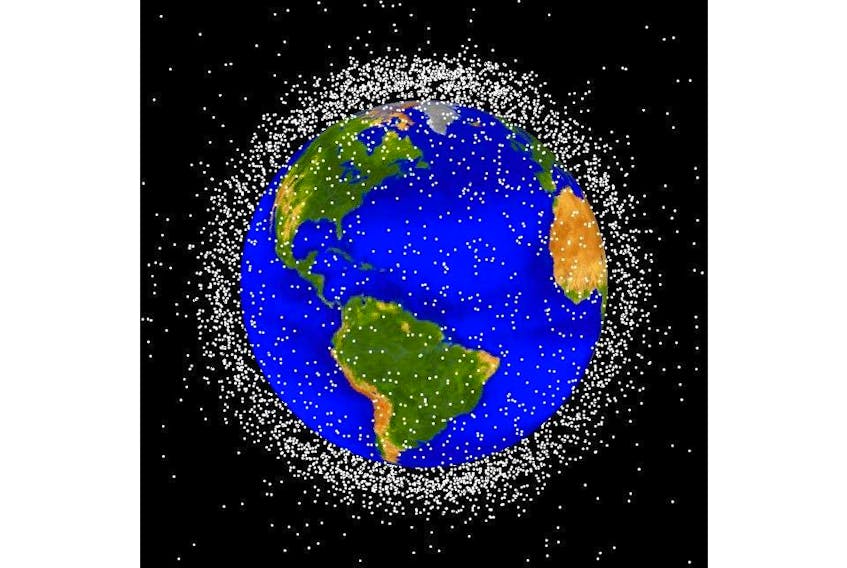The Defence department is asking Canadian scientists to try to come up with a way to rid the Earth’s orbit of the millions of pieces of space junk that pose a threat to satellites and other spacecraft.
But the task is daunting as no other researchers have yet to figure out how to collect the debris, which can be as small as one millimetre in size.
The call for ideas on how to track the space junk and “de-orbit” the debris was recently issued by the Department of National Defence and proposals are expected by the third week of August.
“Collision risks from on-orbit debris is of significant importance, especially given the growth potential for smaller spacecraft,” explained Dan Le Bouthillier, a spokesman for the DND. “Given the increased interest in the exploitation and exploration of space there is an opportunity for Canadians to take a leadership role in keeping space safe for all, and for Canadian industry to reap the economic benefits that will come with finding effective and cost-efficient solutions to the problem of spaced debris.
Le Bouthillier emphasized that the request at this point is not about funding a system but to investigate new ideas to get rid of the space junk.
The total number of “debris objects” in orbit is currently estimated to be around 129 million. That includes 34,000 objects greater than 10 centimetres in size; 900,000 objects one cm to 10 cm; and 128 million objects one mm to one cm, according to the DND.
The debris has been created by decades of space travel and operations. Space junk has also been created by other means. In 2007 China conducted a military test using a missile to destroy one of its satellites. The warhead obliterated the spacecraft, creating an estimated 300,000 pieces of debris. The U.S., Russia and India, has conducted similar military experiments.
The amount of space debris is only expected to grow as the number of human-made objects in Earth orbits increase over time. “There are no operational debris removal capabilities in use, globally, and existing prototypes lack important capabilities and have proven ineffective,” the DND noted in its request to researchers.
DND is interested in ways to track some of the smaller pieces of space junk as well as methods to remove multiple pieces of debris of any size.
Le Bouthillier didn’t have any estimates on what such a system would ultimately cost, pointing out that there would be a range since different methods might be needed depending on the type of space junk. Removing a small object in a lower orbit would need different capabilities than say removing a larger piece of a rocket, he added.
Space surveillance networks regularly track about 22,300 objects in Earth orbits. That includes 1,950 operational satellites.
The Canadian Forces has its own satellite, dubbed Sapphire, which is used to track space objects in high Earth orbit. Launched in 2013, Sapphire provides information to the DND and the Canadian Armed Forces about the location of foreign satellites as well as on the whereabouts of orbiting debris, which could pose a hazard to satellites and other spacecraft. In addition, it also allows Canada to gather data about objects, such as space junk, re-entering the Earth’s atmosphere. Such information is also fed into the U.S. military’s space surveillance network.
The Canadian military is now looking at a follow-on program for Sapphire. Called Surveillance of Space 2, that project would provide Canada with the capability to continue gathering information on objects in orbit once Sapphire stops functioning.
That system, which could cost between $100 million and $249 million, won’t be ready until 2026, according to the federal government’s Defence Capability Guide.
• Email: [email protected] | Twitter: davidpugliese
Copyright Postmedia Network Inc., 2019









